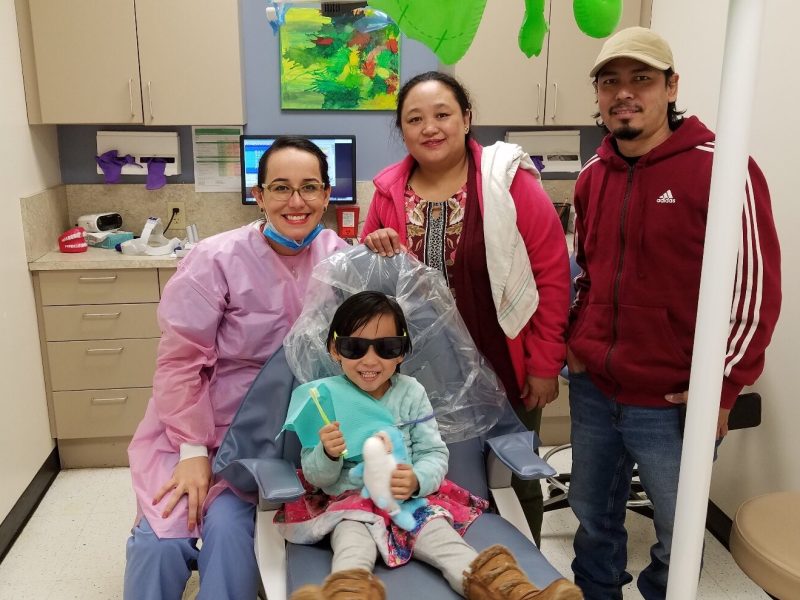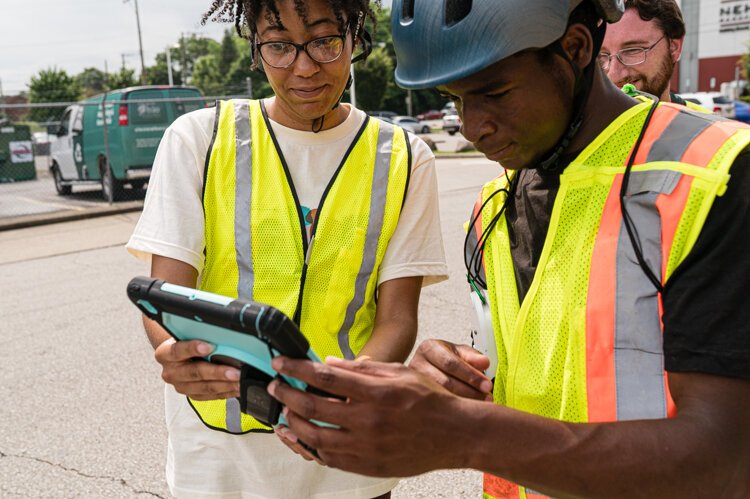Cincy Sets the Stage: Amid $135 million renovation, volunteer tours keep Music Hall in view
When Music Hall re-opens this October, following an 18-month, $135 million renovation, visitors will experience a noticeable step up in programming and the icon's public-facing persona. Meet the docents and tour guides putting its best face forward.
Cincinnati Music Hall closed for its $135 million renovation in May 2016, putting a pause on weekly tours inside the historic 1878 building. That’s meant a hiatus for a program that gave nearly 8,000 annual visitors a glimpse into the nooks and crannies of Samuel Hannaford’s magnificent architectural gem.

But intrepid volunteers organized by the Society for the Preservation of Music Hall have kept the Elm Street venue in the public eye with 90-minute exterior tours of the building and surrounding neighborhood, as well as speaking engagements for interested community organizations.
When Music Hall re-opens in October, they’ll be stepping up that program with many more fascinating presentations.
SPMH hired Ramona Toussaint two years ago to coordinate Music Hall’s volunteer tour program. She has doubled the number of participants, clarified the tasks they handle and encouraged research to ensure accuracy of tour information.

Peter Koenig is SPMH’s president. A lifelong Cincinnati resident and partner in the law firm Buechner, Haffer, Meyers & Koenig, he’s been a Music Hall enthusiast since attending grade school in Clifton. (He also serves on the 16-member board of the Music Hall Revitalization Corp.)
“The tour program Ramona has assembled is all about extending SPMH’s explicit mission to preserve, promote, improve and provide education about Music Hall,” Koenig says. “We’re now offering more tours and enhancing their quality. And the tours are playing an important part in building up our membership.”
Toussaint says, “We want people to understand the importance and the historic relevance of this building. We hope they’ll see how the present ensures its future. Since the 1870s, it’s been a community building in addition to a cultural arts center. It’s changed to meet the needs of the community. We’re helping people understand what was going on in the community that made Music Hall a necessity.”
Music Hall was conceived as more than a venue for musical and cultural presentations. The massive Over-the-Rhine structure is actually three buildings. In addition to the central concert hall, the adjacent wings were created as exposition space for horticultural shows (in the south hall) and machinery exhibitions (in the north hall). It fulfilled the role of a convention center a century before Cincinnati had a more modern facility. During its nearly 139-year history, Music Hall has routinely evolved to meet the needs of Cincinnatians — serving as a gathering place, sports venue, dance hall and more.

Music Hall’s construction was supported by philanthropist Reuben Springer, who pledged $125,000 toward the construction if citizens raised a similar amount. (It’s likely that this was the first “matching grant” anywhere in the world.) Children in Cincinnati Public Schools played a part, too; a penny-collecting campaign generated $3,000.
The hall was never intended to be simply a palace of culture. It was a gathering place for everyday citizens of Cincinnati — for concerts and performances, of course, but also trade shows, graduations, conferences, events, dances and even political rallies and presidential conventions.
Thanks to SPMH’s volunteer tour guides — dedicated researchers and storytellers — there are now numerous opportunities to discover the fascinating history of the building that was designated as a National Historic Landmark in 1975. Tours of one kind or another have been available for many years, but they were miscellaneously offered and coordinated on a catch-as-catch-can basis by the Hall’s management team and staff members from the Cincinnati Symphony and Pops orchestras and the May Festival, as well as the Cincinnati Opera and Cincinnati Ballet.
“The renovation sparked a lot of interest in the building, and we wanted consistency and credibility, really making our tours a top-notch, first-class, well-researched, entertaining, fun program,” Toussaint says. “No one was really speaking for the building itself,” she adds.
That was the perfect niche for SPMH. When the hall reopens, there will be a tour desk for visitors — staffed daily by well-trained, knowledgeable volunteers.
Toussaint began to work with a group of people who had been giving tours. Of particular value was an enthusiastic SPMH board member, Thea Tjepkema, who brought a wealth of experience in historic preservation (as a graduate of the Savannah College of Art & Design), education, public relations and management. Tjepkema’s thorough research has provided an essential foundation for the tours, and she’s worked hand in hand with “content curators,” volunteers recruited by Toussaint to assemble accurate information on various topics.
Another facet of the program Toussaint manages is expanding public awareness with a speaker series and in-school program for third- through fifth-graders. Community presentations can be scheduled, and school visits build enthusiasm among children even before they visit Music Hall. As the hall reopens, more than 30 people are involved in this engaging and enjoyable volunteer program.

Judy Martin, who played viola in the CSO for more than three decades, and her late husband Allen, another long-time violist, began offering impromptu tours of Music Hall in the 1970s.
“We took people backstage to areas not generally open to the public,” she recalls, adding that the CSO provided discounted concert tickets to entice people to visit. “It was a way to get people to attend CSO concerts and teach them about Cincinnati history. It’s fun to be an authority and have the inside scoop. It enhances being a citizen when you have a sense of the city’s history.”
Martin gives informative first-hand tours, including stories about the Symphony’s conductors. She personally performed under the baton of six of them — from Max Rudolf to Paavo Järvi.

Barbara Gomes came to the program more recently, tagging along with her husband Ron Hoffman, a retired professor from Northern Kentucky University, who Toussaint recruited. Gomes, a Bostonian by birth but a Cincinnatian for nearly 50 years, was a history major in college and loved research. She worked closely with Tjepkema to refine several tours, especially Beyond the Bricks, which is stuffed with intriguing architectural and historical details about the building and the neighborhood. They created laminated notecards for guides to use that ensure consistent basic facts. That content has also been assembled as a PowerPoint presentation for volunteers to use in 60-minute engagements at clubs, retirement communities and libraries.
Steve Carlson’s background in sales makes him a natural to deliver presentations about Music Hall enhanced with storytelling. He’s at ease in front of a crowd. (In fact, he was initially recruited to play Santa Claus at SPMH’s holiday concerts in Music Hall’s ballroom.) Carlson graduated from high school in a 1959 ceremony on Music Hall’s stage, and his junior and senior proms were held in the ballroom. He attended Pops concerts for years, but he admits not knowing much about Cincinnati history, nor had he witnessed orchestra, opera or ballet performances.
“It’s all new and neat to me,” he says, thoroughly enjoying the chance to learn more and share his enthusiasm for the building.
While many SPMH volunteers are retirees, Addie Renne from Hamilton represents a demographic that Toussaint is seeking: young adults. Renne, who’s 34, works two jobs and is raising a daughter, but she makes time to volunteer for all sorts of organizations, from the Krohn Conservatory to the Aronoff Center, and SPMH has been a satisfying opportunity. It combines Renne’s interest in history (her Miami University major) with a love of research.
“I’m just beginning,” she says. “I’m a content curator. I’ll probably help with tours, but I’ll be doing more with research. You have to have so many hours in the basics before you get to pick a topic to work on.”
Renne hopes to focus on events at Music Hall that transpired during World Wars I and II. Carlson and Gomes’ husband Ron are working on, “Pulling Out All The Stops: The Mighty Organs of Music Hall,” a tour tracing the stories of instruments from the original Hook & Hastings Organ (one of the largest in the world in 1878) to the Mighty Wurlitzer, built in 1927 for the RKO Albee Theatre, a downtown movie palace, and installed in Music Hall’s ballroom in 2009.
Other tours in the works will explore the “Origins of an Orchestra” and “A Ladies Legacy: The Women Who Mattered.”

All volunteers are eager to show off the renovated Corbett Tower, an event space two floors above the building’s main lobby used for special events, recitals and other gatherings. It’s been restored to its breathtaking 19th-century beauty with significant funding from SPMH. Three tall windows, long bricked-over, have been re-opened, allowing views of Washington Park. Historic stenciling around the high ceiling is back to its original beauty. Several gorgeous crystal chandeliers that previously hung in the main lobby will illuminate the room, named in honor of Patricia and Ralph Corbett, the philanthropists who funded Music Hall’s previous renovation in 1969.
Koenig says, “We’re seeking more willing volunteers, people who care about Cincinnati history in general and this beautiful, iconic building in particular. We want to engage more people willing to do tours and conduct research, volunteers who will join us in sharing the good news about our restoration and revitalization of this stunningly beautiful building.”
Gomes sums up the experience of volunteering. “We love what we’re doing. We feel very privileged to be a part of this.”
Soapbox readers attracted by these exciting opportunities should contact Toussaint by emailing MusicHallTour@SPMHcincinnati.org, or by phone at 513-744-3293.
Support for this Cincy Sets the Stage series is provided by the Society for the Preservation of Music Hall (SPMH).


















